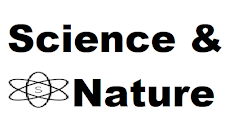Over the past few months, the James Webb Space Telescope (JWST) has provided revolutionary observations that question our knowledge of black holes and the structure of the universe. Though certain clickbait headlines indicate that the telescope has been "shutdown" following the reveal of shocking discoveries, no official confirmation is provided. Yet the data obtained through JWST has indeed fueled heated debate in the scientific community.
Historic Black Hole Observations
The JWST has made the most precise observations yet of
the supermassive black hole located at the center of our Milky Way galaxy,
designated as Sagittarius A*. Scientists measured a steady twinkling of light
from the disk of gas that orbits the black hole, interspersed with periodic
bright outbursts as matter is pulled towards it by its massive gravity.
These findings have provided new insights into the turbulent region close to the event horizon, the point of no return after which nothing can escape the black hole's clutches.
Black Holes Stifling Star Formation
In a different study, JWST observations showed that supermassive black holes can easily switch off star formation in big galaxies by blasting out huge amounts of gas. This "quenching" essentially starves galaxies of the material to make new stars. The telescope caught strong outflows of gas being propelled by black holes, directly showing this occurrence.
One such particular instance is "Pablo's Galaxy," which is around 11.5 billion light-years away. JWST found that the supermassive black hole at its center is ejecting huge volumes of gas at speeds enough to break free of the galaxy's grasp and effectively stopping star formation.
Michio Kaku's View
Theoretical physicist Michio Kaku has been loud and
clear about the implications of JWST's results. According to him, these
observations put into question our conventional definition of time and space.
Kaku theorizes that time is perhaps not an intrinsic part of the universe but a
deception brought about by human perception. He cites the observations made by JWST
of galaxies that seem to be more advanced than they should have been for their
distance and the age of the universe, indicating that our understanding of
linear time might be in error. Additionally, Kaku considers the idea that the
singularity at the heart of a spinning black hole may be a ring instead of a
point, with the potential to enable parallel universes. The notion, while
theoretical, demonstrates the serious questions posed by JWST's observations.
Conclusion
Although there is no proof to back up assertions that the James Webb Space Telescope has been turned off as a result of its findings, what it has gathered is certainly rewriting our knowledge of black holes and the universe. From witnessing the chaotic surroundings of black holes to contesting our understanding of space and time, JWST remains a fundamental resource in seeking answers about the universe.
As Michio Kaku and other researchers explore further into these discoveries, we can expect to see more revelations that could redefine our position in the universe



.png)
%20(1)%20(2).jpg)
0 Comments